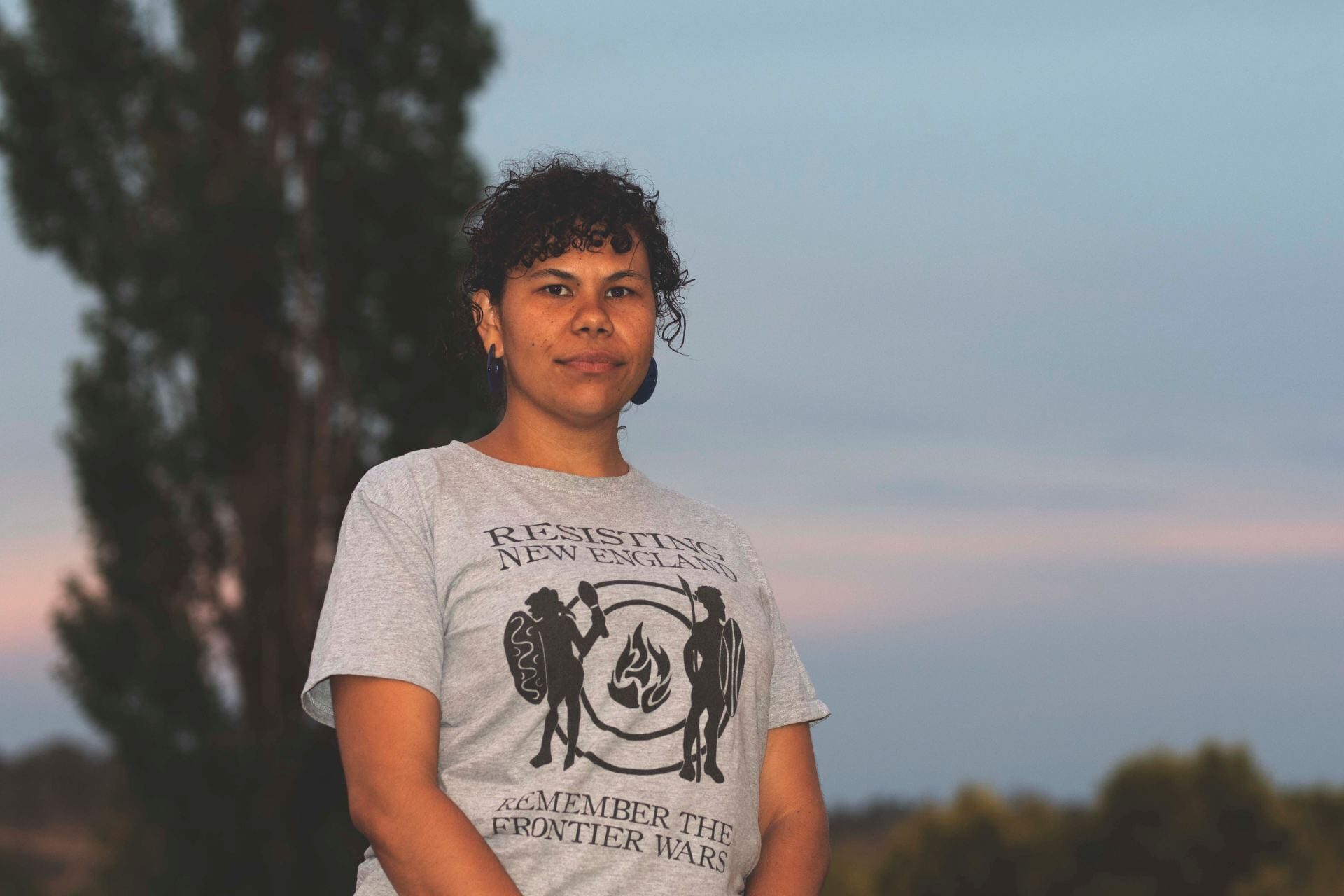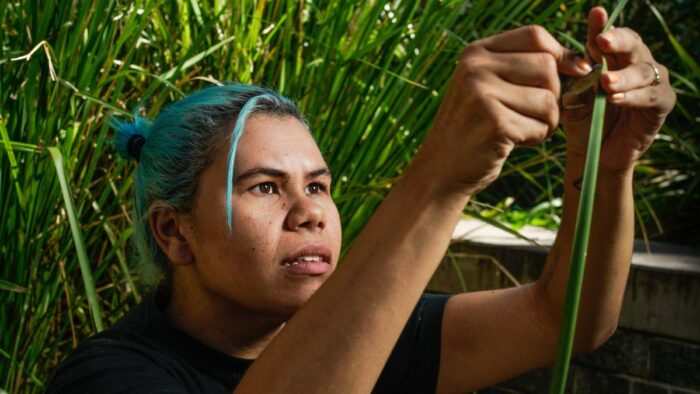
Interview with local Artist Gabi Briggs
Although #NAIDOC2020 events have been postponed from this week ’til November, we take this time to pay tribute to the rich history and achievements of Aboriginal and Torres Strait Islander peoples. #AlwaysWasAlwaysWillBe
It also gives a great opportunity to introduce this week’s Creative New England highlight, Gabi Briggs. Gabi grew up here in Armidale, it’s the land of her ancestors, she has been back in Anaiwan country for the past few years, prior to that she lived in Sydney, Melbourne, and Toronto. She is an incredibly talented and driven young lady and we’re delighted to share some of her stories of life, heritage, and art with you.
When were you first drawn to the arts?
It was in high school. I was shown the works of female Aboriginal artists Destiny Deacon and Fiona Foley and I remember being in awe of their power.
I felt seen when I looked at their works, they offered refuge from the racist tropes that the Australian media perpetuated about my people. It was incredibly liberating to see these strong Aboriginal women subverting these tropes and making visible their stories, unashamedly.
We know you’re an incredible photographer, but you also play with other mediums, can you tell us a little about your art?
Thank you! That is lovely. I majored in Photomedia in art school however I have always been conceptually driven when I create. I utilise the mediums that are available to me and it is always dependent on time and money. One of my favourite mediums is weaving; its culture and practice is deeply rooted in Anaiwan country and we are going to see it’s resurgence in this community. #watchthisspace
Your works discuss and examine the Indigenous experience here in Australia – can you please tell us a little bit about this?
There is no other experience that I can speak to nor want to. I discuss and examine my Anaiwan-ess (my Indigeneity) to bring her back into existence and for her to breathe life into me, my community, and my audience. We have to understand that stories and identities across this continent were stolen and became illegal. We were forcibly silenced.
It is deeply important for me to see the retelling of the Anaiwan story through our lens, not the colonial one.
When I got back home to Armidale, the Anaiwan Language Revival Program was mapping sites of conflict between local Aboriginal peoples and settlers during the colonial frontier. All sites uncovered were found in the archives therefore recorded and documented which left me perplexed as to why their story had been forgotten. These sites are significant. By learning about them we are fundamentally learning about ourselves, they tell our local history, a shared history between Black and White.
Last year, you created the zine, ‘And In Response, I Urge You To Read’, which highlights the New England area, can you tell us about this?
I decided to create the zine, ‘And In Response, I Urge You To Read’ as a resource where readers can view my interpretations of the data drawn from the ALRP research. I wanted to show the relationship between these sites of conflict and the expansion of colonial rule in Anaiwan country. Not only that, but I also wanted the reader to see how this relationship intersects with the devastation of the natural environment and our rivers and streams.
What key messages do you wish to share with your art and why is it so important that people understand this? And, how can everyday Aussies help you share this message?
I really want people to know that we all have agency and we can create change. It is incredibly important that we recognise our own individual privilege, understand it, and to divest from it. This means that we need to listen, see, and learn from those in our community who are less privileged. There is no room for racism, anti-blackness, homophobia, transphobia, or classism.
You work on some really cool projects; can you please tell us a little about the Yinarr Maramali collective you’re involved in?
Over the past decade, I have had the honor of learning how to weave and in recent years I have been able to work with the Gomeroi Women Weaving Collective, Yinarr Maramali which is based out of Tamworth. These Gomeroi women have revitalised a Gomeroi weaving community, working with young Koori girls in local schools, and elders to revitalise a practice that belongs to them.

Gabi Briggs, Gomeroi Women’s Weaving Collective | Photo: Armidale Express
In August at Tamworth Regional Art Gallery, Yinarr Maramali will be holding its first solo exhibition, showcasing works that the group has created individually or collectively, it includes incredible collaborative works made with the local Gomeroi community. I will have a few works in the exhibition including the collaborative weaving project myself and my Bawa Amy Hammond completed in 2016, which was an eel trap that we affectionately named ‘Aunty’.
Top tip: You should check out Yinarr Maramali on instagram. The people behind these incredible weavings are Amy Hammond, Emily Honess, Sophie Honess, Lorelle Munro, Bronwyn Spearim and Lena Smith.
Who are your biggest influences?
My old fullas, family, and country.
We know you had a few exhibitions postponed due to COVID – can you tell us a little bit about these?
Yes, unfortunately, things have been postponed! Irbela Unknown is an exhibition I will be curating next year with BUS Projects in Melbourne. Also, the Yinarr Maramali exhibition in Tamworth will also be shown at the Armidale Cultural and Keeping Place later this year.
What is one message you would give to any aspiring artists?
Go for it.
What’s the best creative advice you’ve received?
The best advice I have been given is that the labour you put into creating artwork has value. Do not sell yourself short; exposure does not pay the bills.
And finally, what’s your favorite thing about being a part of the New England community?
It is the place that my ancestors have lived and survived for an incredibly long time.
My favourite part is that I come from here. I feel truly blessed, it is beautiful. I even stand for the freezing, cold weather even when it snows. I love that this is where most of my family is too.
Thank you so much for your time, Gabi! We absolutely loved learning about you, your heritage, and the beautiful messages your art shares – if you’d like to follow Gabi’s journey you can check her Instagram we also urge you to learn more about the history of the land you’re on – First Languages Australia is a great place to start.
If you’re looking for something to keep you inspired why not check out Creative New England or join their Facebook group to keep in the loop with up and coming competitions!
There’s something for everyone! #CreativeNewEngland


